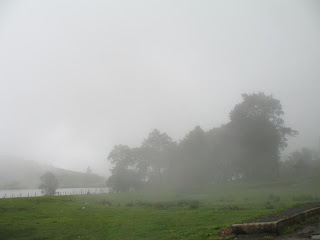And we owe a lot to the bike that managed to do the distance, most of it on poor quality fuel, without any servicing apart from the oil and filter changes. If you are wondering, we did have total of 3 punchers.
Thursday, March 19, 2009
And we owe a lot to the bike that managed to do the distance, most of it on poor quality fuel, without any servicing apart from the oil and filter changes. If you are wondering, we did have total of 3 punchers.
Wednesday, July 30, 2008
 After a 5weeks in Sri Lanka it was time to leave Asia and head back to Europe. The bike had already arrived in Barcelona. The bike was meant to be delivered to Sevilla but likelihood of that happening not good, after a lengthy delay and endless excuses by the Spanish shipping agent we decided to go to Barcelona to collect the bike ourselves. The bike had arrived in one piece and needed a rear tyre replacement quite badly before riding down to Sevilla.
After a 5weeks in Sri Lanka it was time to leave Asia and head back to Europe. The bike had already arrived in Barcelona. The bike was meant to be delivered to Sevilla but likelihood of that happening not good, after a lengthy delay and endless excuses by the Spanish shipping agent we decided to go to Barcelona to collect the bike ourselves. The bike had arrived in one piece and needed a rear tyre replacement quite badly before riding down to Sevilla.Tuesday, September 04, 2007
Galle, fourth largest city/town (pop 91,000), 119 km south of Colombo was our next destination before arriving back in Colombo. Located on the south western end of the island, Galle has been an important ancient seaport of Tarshish, from which King Solomon drew ivory, peacocks and other valuables. Certainly, cinnamon was exported from Sri Lanka as early as 1400 BC and the root of the word itself is Hebrew, so Galle may have been the main entrepot of the island for the spice.
Images 1-3 External parameter walls of the port
Images 4-14 fort interior

Images 15-19 local traders 

















































